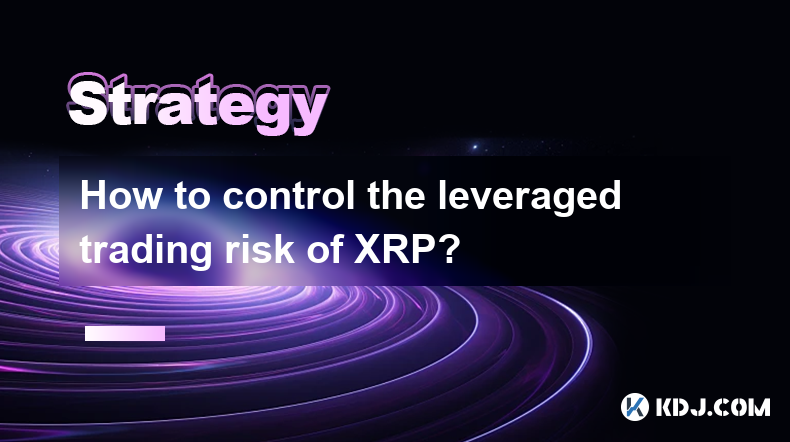-
 Bitcoin
Bitcoin $84,512.3183
-0.50% -
 Ethereum
Ethereum $1,588.1225
0.23% -
 Tether USDt
Tether USDt $0.9996
-0.01% -
 XRP
XRP $2.0642
0.48% -
 BNB
BNB $591.8173
0.47% -
 Solana
Solana $134.4792
-0.11% -
 USDC
USDC $0.9999
0.01% -
 Dogecoin
Dogecoin $0.1574
2.08% -
 TRON
TRON $0.2420
-2.16% -
 Cardano
Cardano $0.6293
2.51% -
 UNUS SED LEO
UNUS SED LEO $9.2288
1.66% -
 Chainlink
Chainlink $12.6112
1.23% -
 Avalanche
Avalanche $19.1082
0.52% -
 Toncoin
Toncoin $2.9983
2.24% -
 Stellar
Stellar $0.2408
0.84% -
 Shiba Inu
Shiba Inu $0.0...01225
4.64% -
 Hedera
Hedera $0.1660
2.02% -
 Sui
Sui $2.1233
0.65% -
 Bitcoin Cash
Bitcoin Cash $337.9337
1.98% -
 Litecoin
Litecoin $75.8547
1.24% -
 Polkadot
Polkadot $3.6527
0.78% -
 Hyperliquid
Hyperliquid $16.9003
-0.50% -
 Dai
Dai $1.0000
0.02% -
 Bitget Token
Bitget Token $4.4061
1.14% -
 Ethena USDe
Ethena USDe $0.9992
0.01% -
 Pi
Pi $0.6465
4.78% -
 Monero
Monero $214.7733
-0.74% -
 Uniswap
Uniswap $5.1912
0.85% -
 Pepe
Pepe $0.0...07309
1.65% -
 OKB
OKB $50.3150
0.15%
How do candlestick charts help identify the behavior of cryptocurrency market makers?
Candlestick charts reveal market maker actions through patterns like hammers, dojis, and engulfing signals, but should be used with volume and other indicators for accurate analysis.
Apr 06, 2025 at 12:07 am

Deciphering Market Maker Actions Through Candlestick Charts
Candlestick charts, while seemingly simple, offer a wealth of information about price action, including potential insights into the activities of cryptocurrency market makers. These powerful visual tools reveal information about buying and selling pressure, which can be indicative of larger market manipulations or strategic moves by significant players. Understanding how to interpret these signals can provide a significant edge in navigating the volatile cryptocurrency market.
One key aspect is understanding the relationship between the candlestick's body and wicks. A long green candlestick body signifies strong buying pressure, suggesting market makers might be accumulating assets. Conversely, a long red candlestick body indicates significant selling pressure, possibly indicating distribution by market makers. The wicks, or shadows, extending above and below the body, represent price exploration beyond the opening and closing prices. Long upper wicks, for instance, suggest resistance to upward price movement, hinting at potential selling pressure from market makers.
Identifying potential manipulation attempts requires looking at patterns. Hammer and hanging man patterns, for example, can be indicative of market maker activity. A hammer, a bullish reversal pattern, shows a long lower wick with a small body, suggesting a strong buying pressure that pushed the price back up after a downward move. Conversely, a hanging man, a bearish reversal pattern, displays a similar structure but indicates potential selling pressure after an upward trend. These patterns, however, should not be interpreted in isolation.
Doji candlesticks are another crucial element. These candlesticks have opening and closing prices that are nearly identical, creating a small or no body. Dojis often signify indecision in the market, a potential battleground between buyers and sellers, and can be a signal of market maker manipulation or a period of consolidation before a significant move. The context surrounding the Doji, like its position within a larger trend, is crucial for accurate interpretation.
Analyzing candlestick patterns in conjunction with volume data enhances the accuracy of identifying market maker behavior. A large volume accompanying a significant candlestick indicates strong conviction behind the price movement, suggesting a larger player is likely involved. Conversely, a large candlestick with low volume could indicate a manipulation attempt by market makers to create a false sense of momentum.
Market makers often use engulfing patterns to signal their intent. A bullish engulfing pattern occurs when a large green candlestick completely engulfs the previous red candlestick, suggesting a shift in market sentiment and potential buying pressure. Conversely, a bearish engulfing pattern has a large red candlestick engulfing the previous green one, signaling potential selling pressure. These patterns, however, are more reliable when combined with other confirming indicators.
Understanding the context is vital. Consider the broader market trend. A hammer candlestick in a strong uptrend might hold less significance than the same pattern in a downtrend. Furthermore, looking at the time frame is crucial. A pattern that appears significant on a daily chart might be less important on a 1-minute chart. Always analyze multiple timeframes to gain a holistic perspective.
The identification of key support and resistance levels is crucial in understanding market maker behavior. Market makers often manipulate price around these levels to either accumulate or distribute assets. Observing how the price interacts with these levels, particularly during significant candlestick formations, can provide valuable insights into their strategies.
Specific candlestick patterns, while informative, are not foolproof indicators of market maker activity. They should be used in conjunction with other technical analysis tools, such as moving averages, volume indicators, and other forms of chart analysis. It's essential to develop a comprehensive trading strategy that incorporates multiple indicators and risk management techniques.
Furthermore, the use of candlestick patterns alone should not be the sole basis for trading decisions. Fundamental analysis, news events, and overall market sentiment should also be considered. A holistic approach to market analysis, integrating technical and fundamental elements, is crucial for making informed decisions.
Remember, recognizing market maker behavior isn't about predicting the future with certainty. It's about improving your understanding of market dynamics and making more informed trading decisions. Always practice risk management and trade responsibly.
Frequently Asked Questions
Q: Can candlestick charts alone definitively identify market maker behavior?
A: No. Candlestick patterns are valuable tools, but they should be used in conjunction with other technical indicators and fundamental analysis for a more comprehensive understanding.
Q: What other indicators should be used alongside candlestick charts to analyze market maker behavior?
A: Volume indicators, moving averages, Relative Strength Index (RSI), and other technical indicators provide additional context and confirmation of potential market maker activity.
Q: Are all candlestick patterns indicative of market maker manipulation?
A: No. Many candlestick patterns simply reflect the natural ebb and flow of buying and selling pressure. Only specific patterns, combined with other indicators and context, suggest potential manipulation.
Q: How can I improve my ability to interpret candlestick charts in relation to market maker activity?
A: Practice, study, and experience are key. Analyze historical charts, backtest strategies, and learn from your successes and mistakes. Consider using educational resources and charting platforms.
Q: Is it possible to consistently profit from identifying market maker behavior?
A: No, predicting market movements with certainty is impossible. Identifying potential market maker actions can improve trading decisions, but it doesn't guarantee profits. Risk management is crucial.
Disclaimer:info@kdj.com
The information provided is not trading advice. kdj.com does not assume any responsibility for any investments made based on the information provided in this article. Cryptocurrencies are highly volatile and it is highly recommended that you invest with caution after thorough research!
If you believe that the content used on this website infringes your copyright, please contact us immediately (info@kdj.com) and we will delete it promptly.
- 3 Cryptos Heating Up, But This Time, Price-Conscious Buyers Are Stealing the Spotlight
- 2025-04-19 09:15:13
- This Week in Bitcoin: BTC Remains Stable Around $84k
- 2025-04-19 09:15:13
- Decentralized economy isn't always that decentralized
- 2025-04-19 09:10:13
- DIA to Host an AMA on X on April 23rd at 16:00 UTC
- 2025-04-19 09:10:13
- American Asset Management Company Canary Capital Has Taken a New Leap
- 2025-04-19 09:05:13
- Canary Capital Files to Launch the First US-Listed ETF Focused on Tron's TRX Token That Includes the Staking Feature
- 2025-04-19 09:05:13
Related knowledge

What does SHIB's Cardano coefficient below 0.3 indicate?
Apr 19,2025 at 08:00am
What does SHIB's Cardano coefficient below 0.3 indicate? The Cardano coefficient, often used within the cryptocurrency community, is a metric that helps investors and analysts understand the correlation between different cryptocurrencies. When it comes to SHIB (Shiba Inu) and its Cardano coefficient falling below 0.3, this indicates a relatively low cor...

Should I reverse the operation when the long-short ratio of SHIB perpetual contract reaches 3:1?
Apr 19,2025 at 04:36am
Understanding the Long-Short Ratio in SHIB Perpetual ContractsThe long-short ratio is a key metric in the world of cryptocurrency trading, particularly when dealing with perpetual contracts. For SHIB (Shiba Inu) perpetual contracts, this ratio indicates the balance between traders who are betting on the price of SHIB to rise (long positions) and those b...

Where is the average cost line for short-term holders of SHIB?
Apr 19,2025 at 03:42am
The average cost line for short-term holders of SHIB, or Shiba Inu cryptocurrency, is a critical indicator that provides insights into the behavior and sentiment of investors who have held the token for a shorter duration. This line represents the average price at which these short-term holders acquired their SHIB tokens. Understanding where this line s...

What should I do after the head and shoulders top pattern of XRP appears?
Apr 19,2025 at 01:28am
The head and shoulders top pattern is a significant technical analysis indicator that many traders and investors in the cryptocurrency market, including those involved with XRP, pay close attention to. When this pattern appears in the price chart of XRP, it is often interpreted as a bearish signal, suggesting that a reversal in the current uptrend may b...

What does it mean for XRP to confirm the breakout of the previous high and then step back?
Apr 19,2025 at 04:42am
What does it mean for XRP to confirm the breakout of the previous high and then step back? In the world of cryptocurrency, technical analysis plays a crucial role in understanding market movements and potential future trends. One specific scenario that traders and investors often analyze is when a cryptocurrency, such as XRP, confirms the breakout of a ...

How to control the leveraged trading risk of XRP?
Apr 18,2025 at 09:50pm
Leveraged trading of XRP, like any other cryptocurrency, involves significant risk due to the high volatility of the market. Understanding and controlling these risks is crucial for any trader looking to engage in leveraged trading. This article will guide you through the essential steps and strategies to manage the risks associated with leveraged tradi...

What does SHIB's Cardano coefficient below 0.3 indicate?
Apr 19,2025 at 08:00am
What does SHIB's Cardano coefficient below 0.3 indicate? The Cardano coefficient, often used within the cryptocurrency community, is a metric that helps investors and analysts understand the correlation between different cryptocurrencies. When it comes to SHIB (Shiba Inu) and its Cardano coefficient falling below 0.3, this indicates a relatively low cor...

Should I reverse the operation when the long-short ratio of SHIB perpetual contract reaches 3:1?
Apr 19,2025 at 04:36am
Understanding the Long-Short Ratio in SHIB Perpetual ContractsThe long-short ratio is a key metric in the world of cryptocurrency trading, particularly when dealing with perpetual contracts. For SHIB (Shiba Inu) perpetual contracts, this ratio indicates the balance between traders who are betting on the price of SHIB to rise (long positions) and those b...

Where is the average cost line for short-term holders of SHIB?
Apr 19,2025 at 03:42am
The average cost line for short-term holders of SHIB, or Shiba Inu cryptocurrency, is a critical indicator that provides insights into the behavior and sentiment of investors who have held the token for a shorter duration. This line represents the average price at which these short-term holders acquired their SHIB tokens. Understanding where this line s...

What should I do after the head and shoulders top pattern of XRP appears?
Apr 19,2025 at 01:28am
The head and shoulders top pattern is a significant technical analysis indicator that many traders and investors in the cryptocurrency market, including those involved with XRP, pay close attention to. When this pattern appears in the price chart of XRP, it is often interpreted as a bearish signal, suggesting that a reversal in the current uptrend may b...

What does it mean for XRP to confirm the breakout of the previous high and then step back?
Apr 19,2025 at 04:42am
What does it mean for XRP to confirm the breakout of the previous high and then step back? In the world of cryptocurrency, technical analysis plays a crucial role in understanding market movements and potential future trends. One specific scenario that traders and investors often analyze is when a cryptocurrency, such as XRP, confirms the breakout of a ...

How to control the leveraged trading risk of XRP?
Apr 18,2025 at 09:50pm
Leveraged trading of XRP, like any other cryptocurrency, involves significant risk due to the high volatility of the market. Understanding and controlling these risks is crucial for any trader looking to engage in leveraged trading. This article will guide you through the essential steps and strategies to manage the risks associated with leveraged tradi...
See all articles
























































































